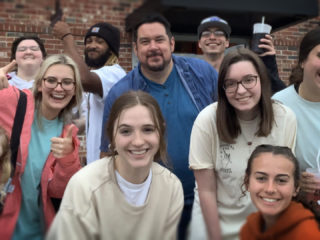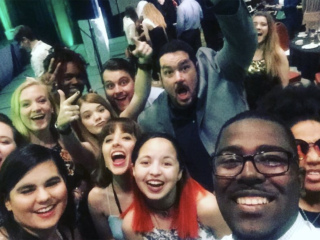Student organizations can and should be more than a “club.” The term club suggests that it is just a bunch of friends who get together to have fun and talk about other people, places, and things. Though, every student organization should have a little of this, it is paramount that it doesn’t make up the foundation for what the organization is. With that said student organizations shouldn’t be all work and no play either. I abhor the use of Robert’s rules for meetings (unless for official business) because of the boring rigid nature of it and because it takes the play out of meetings.
The use of Robert’s Rules of Order or otherwise known as Parliamentary Procedure is a necessary evil when dealing with official procedures such as proposals and voting. The same can also be said for the organization and governing structure. Providing a since of order goes a long way to both the brand and the longevity of the student organization by establishing a sense of legitimacy and a system that accounts for proper processes, major issues and problem solving. Creating order also gives students valuable leadership and volunteering opportunities both of which can provide terrific psychic rewards such as confidence and independence.

Leadership.
In the case of leadership and governing structures there are many different ways to do this, but I have discovered in my many years as an advisor that there are a few things that need to be clear no matter what structure you choose. First and foremost, there must be a clear separation of powers, duties and responsibilities between the leadership roles. In my experience most miscommunications and missed opportunities arise from either someone doing someone else’s duties or no one doing something because it was thought to be handled by someone else. This also makes it a little bit more difficult for one person to carry the yoke, a problem that often leads to burnout for a student in leadership. Second, is a system for accountability not only for the individual, but also for the organization.
To assure that issues are handled promptly and efficiently it is best that all major duties have redundancies and/or supervision. In the case of the Creative Collective here at Southern Miss the President is the direct supervisor of the Treasurer and the Vice President is a redundancy for the President. This system helps to create accountability for the group but also allows supervisors to provide accountability to those they supervise. Undoubtedly this system has its flaws but it has managed to work quite successfully thanks to members and executive members holding each other accountable.
Legacy is another factor in creating quality leadership in an organization. Leadership that is focused on creating change, establishing traditions, or building/rebuilding are likely to be more invested because these become goals or initiatives that leave lasting impact. Leaders without goals are a ship without a compass, not only are they lost but when seas get rough they often give up. There have been times as an advisor I have not handled this well or worked to help create this in student leaders and admittedly that has created some of the “down years” in the student organizations.
Advising.
The role of the advisor should be seen as a privilege, and I often don’t think my colleagues in academia see it this way. Many see it as a laborious work, a check mark for their service quotient in their yearly evaluations or as a means to lead/control students in a non-classroom environment. Some advisors will even go so far as to ensure that organization members work on research or projects that only directly impact their specific courses or research. The role of the advisor is an opportunity to take a bigger part in a student’s education and college experience by being a guide, a sage, and an encourager.
An advisor is not a leader. They’re not even a member of the organization. An advisor is someone who lives above it or outside it. It is important that advisors remember that simply the position of being a faculty member carries weight and can influence. This does not give them the authority to manipulate it, nor does this give them the power to dictate it. It does however give them a perspective that many student leaders don’t have. Sometimes this perspective is simply the bigger picture of the organizations impact on community, culture and collaboration. At other times this perspective is lasting impacts or consequences that span further than the four years a student may normally matriculate. No matter what perspective this may create for an advisor it must help them inform and guide.
I’ve heard it said that advisors should let their leaders fail and while there is some truth to this there are also caveats. Some failures can be demoralizing to the student and to the organization. This can ripple throughout the year and create a toxic environment as well as ruin student relationships. It is important that advisors stay informed of plans and initiatives to advise against future potholes down the road but also to provide possible solutions to help mitigate negative results. An advisor can at times also plant seeds by simply giving fair assessments to student leaders which allow those leaders to plan more realistically. An advisor must remember that it is a student organization, it is for the students and their mission and no one else’s.

Pizza and Projects 
Christmasgiving 
Bowling Night
Fun.
All work and no play makes Jack a dull boy. The best part of a student organization is the fun that is had. It is the most memorable and it is also the most productive, which means for me it is the most important. Productivity for a student organization isn’t about producing physical objects, projects or even doing things. It is about the community, culture, and collaboration that was mentioned in the previous post. Fun can also be a lot of different things but the most important thing about fun is that it is defined by the students. This is important because faculty age, but students don’t.
Group dynamics and generational traits will change from year to year. Thus, the definition of fun is likely to change. You may find in one year students want to enjoy a game night while in the next they would rather laser tag. By letting fun be defined by the students it may break from some traditional events but it may also create new events that get added to a list of possibilities for future students. While traditions are a great way to help the organization seem bigger than one student’s experience, a single student’s experience informs us to what a current and possible future student really wants or desires from their organization.
It is also important to note that fun does not have to relate back to design, art, or whatever the degree plan the student is in or that the organization is attached to. In many cases it is better if it doesn’t. In the past I’ve seen students work really hard to find design related events to have as “fun” events and the issue that arises is that students’ creative juices are already burned out and students typically find those events to be work, rather than “fun.” Events such as bowling, laser tag, taco Tuesdays, movie night, etc. allow students to deflate together and get to know each other beyond the classroom and their skillsets. These events also allow students to vent, which is necessary so that they can move past whatever problems they may be having with a particular project, person, or issue.

Easter egg Painting 
Bookbinding Workshop
Educational Supplement.
A student organization is a great opportunity for students to get just a little bit more out of their education. As an organization they have the ability to travel to conferences (more on that in a later post), bring in guest artists, and host workshops/tutorials. These are important opportunities because they not only help to give legitimacy to the group to members, but also to faculty in the department/area. Faculty are more apt to being supportive if they believe students are getting together to better themselves than just to have fun. Though I feel fun events are the more important events, educational events bring the most benefits to the individual students and can be sold as benefits to prospective members.
Like fun events, these educational events should be determined by the students. Though as advisors we may feel they could learn more by doing a specific workshop or tutorial over another it is more important that the students understand that this is a student guided learning opportunity and not an extension of a class. By giving the student members the ability to govern and determine their own opportunities they become invested in attending the event and more interested during the event.
One issue that students have when determining what educational events to host is not knowing what they don’t know. This is a great opportunity for a faculty advisor to make suggestions and build excitement around the possibilities. This, however, is also a place that a faculty advisor can take advantage of students by using their influence to “heavily suggest” or by being selective with options. In the area of events and activities there are some that I do recommend faculty advisors to become more suggestive with. These events will be touched in Part 3 of this series.








